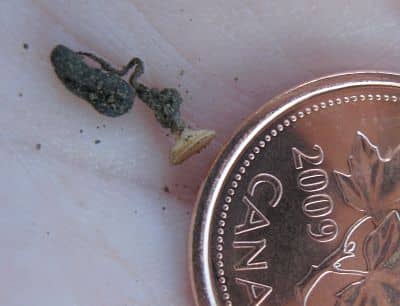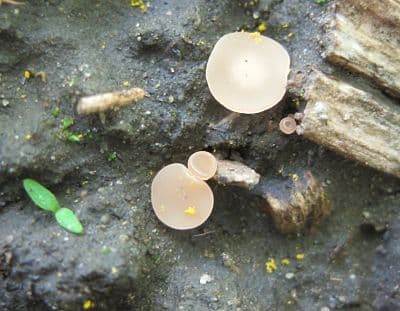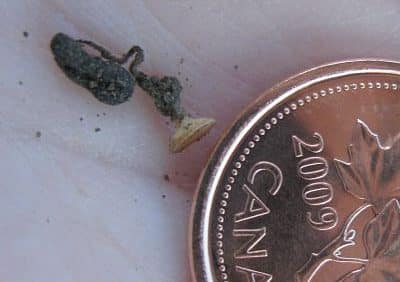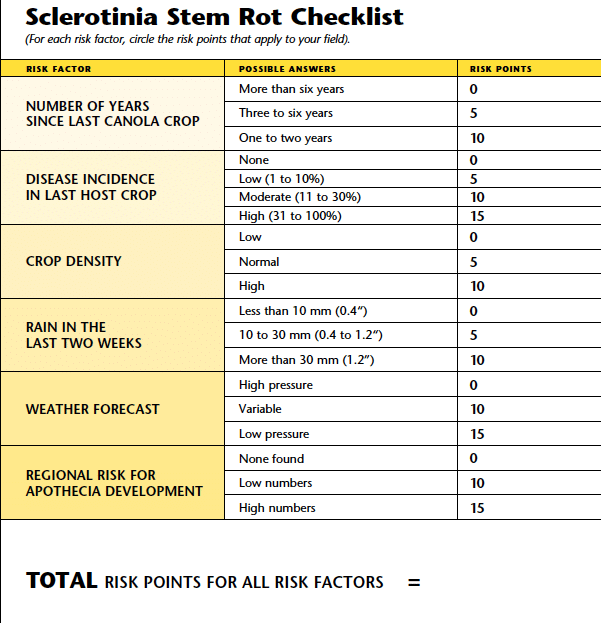

Moisture is the key factor in sclerotinia stem rot risk. Good soil moisture and a few rains in the period starting two weeks before flowering and carrying through to infection after flowering will greatly increase the sclerotinia risk.
Dry conditions the past week or so in North Dakota have resulted in a lowering of that state’s sclerotinia forecast. At this link, see how the map changed from June 23 to June 26. The moisture situation is highly variable across the Prairies so the sclerotinia threat tends to be location specific. It can also change over time so it should be evaluated for each field as flowering begins.
Ample moisture in the two weeks before flowering causes sclerotia bodies deposited in the soil from affected plants in previous canola or other host crops to germinate. This produces apothecia, the mushrooms shaped like tiny golf tees. (See the photos above.) Changes in relative humidity below the canopy trigger apothecia to release ascospores into the air. These spores land everywhere, but only those that land on canola petals concern us. Ascospores need decomposing plant tissue as a food source to continue their cycle. Petals drop off, land in the canopy and then start to decay. These decaying petals give sclerotinia spores the energy to produce hyphae and acids to invade stem tissue. Because most fungicide sprays do not effectively penetrate the stem tissue to eradicate infection and do not effectively control established infection, living flowers are the best target for fungicides to prevent sclerotinia infection.
If your fields had moist soil ahead of flowering, and rain or high humidity during and after flowering, then infection is likely. Whether a spray pays is more difficult to answer, but moist conditions and high yield potential will likely create a favorable economic payback from a fungicide application.
The CCC will host a webinar tomorrow, Thursday, June 28, with AAFC research scientist Kelly Turkington, on the topic of disease management and risk assessment. Click here to register. The webinar will include an overview of sclerotinia life cycle, correct identification of apothecia and disease symptoms, and practical recommendations to gauge the risk and the need to spray.
What is your sclerotinia risk score? (**Include scoresheet**) This checklist developed in Sweden can be useful in helping to assess disease risk in fields. Growers should fill out the checklist for each field shortly after first flower (when 75% of the canola plants have at least 3 open flowers). Results in Sweden have suggested that fields scoring 40 or higher will likely benefit from a fungicide, but this may vary a bit depending on fungicide cost and commodity price. One comment about apothecia: They are hard to find, and if you scout and don’t find any or very few, your risk of sclerotinia could still be high if moisture and humidity conditions are present.


